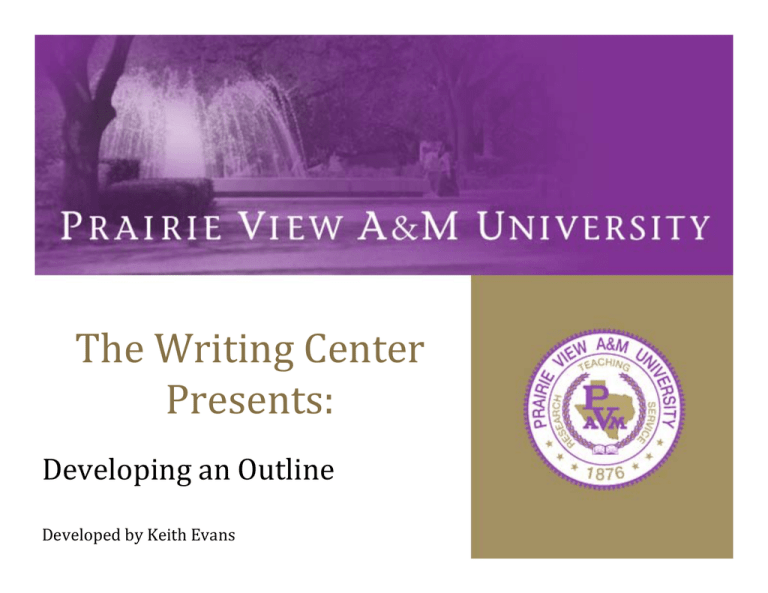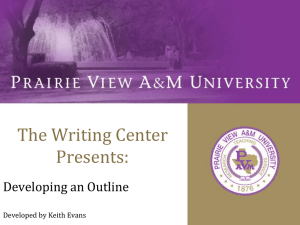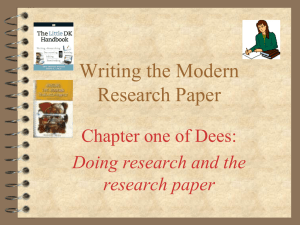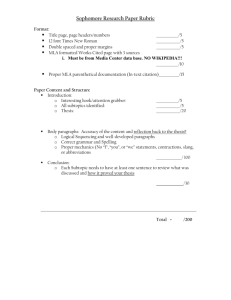The Writing Center Presents: Developing an Outline Developed by Keith Evans
advertisement

The Writing Center Presents: Developing an Outline Developed by Keith Evans Purpose • Generally, Outlines are for your own benefit: they help you organize your thoughts, your thesis statement, set out your arguments and sets up how your essay will flow. • There are no specific guidelines for creating a general outline for yourself. However, some professors will ask for one along with a first draft. • In this case, there are certain MLA guidelines to drafting am outline you should follow. Elements of an Outline • Paralellism: All your headings and subheadings should reflect one another. If the first headding is a verb, then the second should be a verb. Thes verbs should be in the same tense, preferably present tense. • Coordiantion: Your points should link to one another to help your outline, and thus your essay, flow. The information con in your first heading should have the same significance as the information in your next heading. • Subordination: Your top heading should be general, but your subheadings should be specific. Each sub heading should grow in specificty. • Division: Each headding should be broken down into at leat two subheadings. Order • Always start with a proper MLA heading. • Directly after your title should be your thesis statement, it will not be indented. Order Continued • The first heading under your thesis statement should be the first main point of your essay that proves your thesis. • Main headings will always be in roman numerals. • Each subheading should have some significance linking it to each previous heading. • Subordinate points should follow some cause and effect or chronological order. Example From MLA Handbook Conclusion • At the end of your point‐by‐point out line, add a conclusion paragraph or abstract. • This paragraph will summarize your paper and will illustrate how it will flow together. • Briefly explain the significance of your main headings and sources in relation to your thesis. Helpful Hints • Subdivisions after the main heading will be bulleted with capital letters. • Only divide subdivisions if needed. If you have an A. you must include a B. If you have a 1. you must include a 2. • If you divide topics even further use lower case letters. • Use complete, coherent sentences. Avoid fragments and single word word phrases. Sample Paper Works Cited • All information and graphics obtained from: MLA Handbook 7th Ed. The Purdue Online Writing Lab (OWL): http://owl.english.purdue.edu The Modern Language Association: http://www.mla.org The Writing Center Contact Info Prairie View A&M Writing Center Hilliard Hall, Room 118 http://www.pvamu.edu/pages/4399.asp (936)261‐3724 WritingCenter@pvamu.edu





